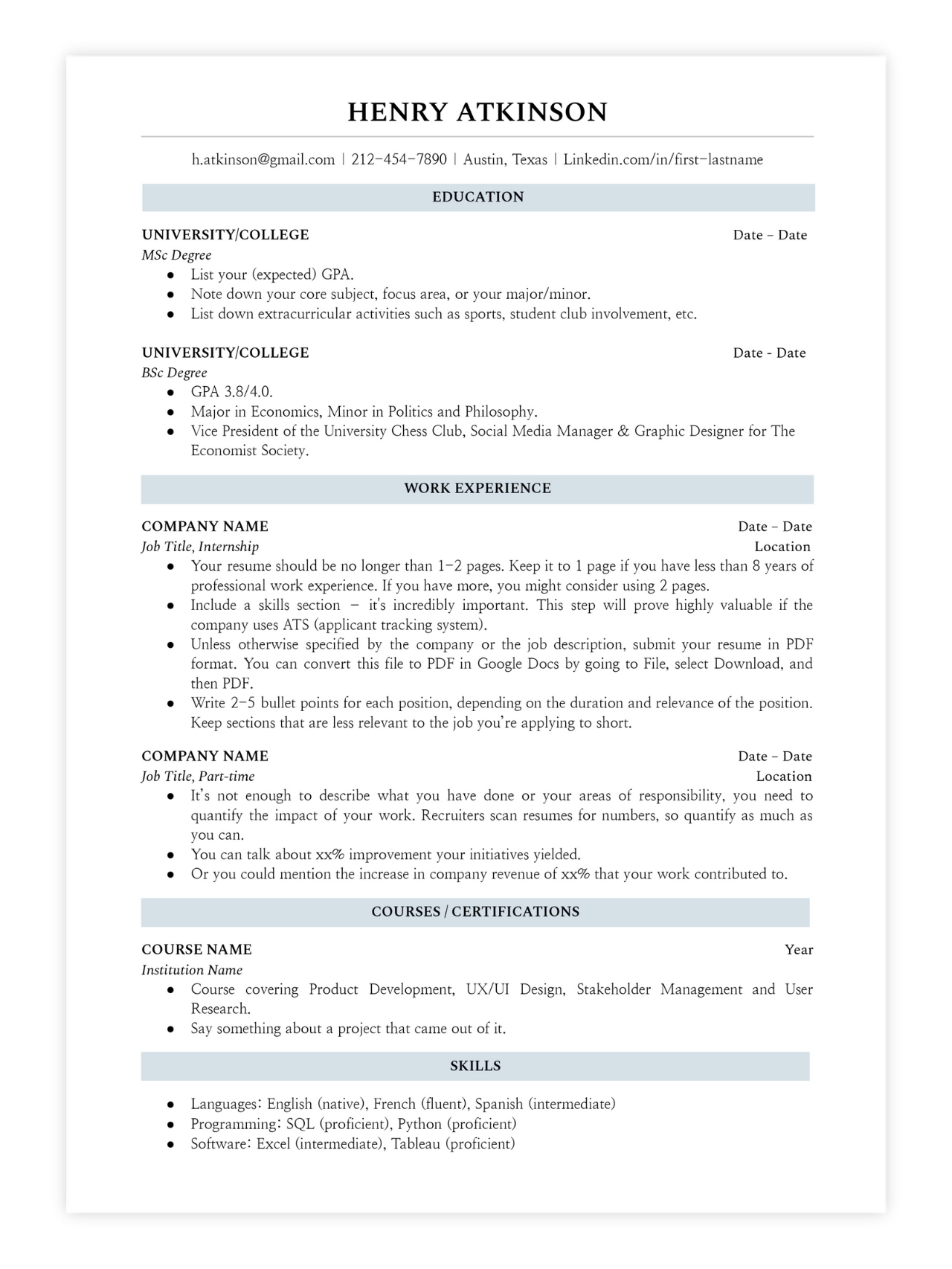The Ultimate Resume Template for Students and Recent Graduates
Are you a student preparing yourself to enter the workforce? Are you struggling to write your very first resume? How many resume templates have you scrolled through, trying to pick the right one? And just how many conflicting pieces of advice can exist about a single piece of paper? Too many, unfortunately.
Now, let’s get real about your first job search. The journey might take months, and not every door will open right away. But a well-crafted resume combined with a proactive job search strategy can definitely help you find a clearer path toward that first role. And because resume writing is usually about as thrilling as a dental appointment, let’s shake things up with some dos, don’ts, whys, and why nots. I’ll do my best to keep it interesting—you just stay awake. Deal?
MUST DOs…
Keep it to one page. This isn’t negotiable. You’re in your twenties and likely fresh into the workforce, so unless you’ve already founded a Fortune 500 company, a single page will cover it.
Starting at the Top...
Name: This sounds obvious, but you'd be amazed how many resumes mess up the basics. Your name should be front and center, without middle names or nicknames
Address: There is no need for you to list down your exact residential address - no potential employer is planning to send you flowers as a thank you for attending the interview. Giving a potential employer your address serves one purpose - letting the employer know whether you’ll need to relocate for the job or not. Hence, city + country is sufficient (city + state if you live in the US).
Phone Number: Stick to your cell, and keep the voicemail greeting professional.
Email Address: Avoid anything quirky like “cooldude@hotmail.com.” Keep it professional and spam-proof, like “janesmith@gmail.com.” Do not list a Hotmail email address (for obvious reasons…).
Place these details at the top of the page. Readers scan resumes, so they’ll start at the top. Make it easy for them.
Next Steps...
Education: List your degree, school, location, and graduation date. You can include honors, training, or student clubs you were a part of here too. Only list your GPA if it’s slightly above average. After your first job, shift this section lower on your resume, below the work experience section.
Work Experience: Once you have a few years under your belt, this section will likely be the lengthiest. For now, as a new graduate, it’ll be more compact but no less important. Include the company name, location, and dates (or season, like “Summer 2024”) for each job. If the company isn’t well-known, add a brief description so the hiring manager understands the context. Then, focus on what you achieved there, however small it might seem.
Courses/Certifications: Use this section to stand out among the crowd when you have little to no work experience. List any courses you’ve taken (online or in person), certifications you have, volunteering work you’ve done or projects you’ve worked on.
Skills: Use this final section for unique skills. Choose details that help you stand out, and avoid generic words like “communication” and “teamwork“.
ABSOLUTELY DO NOTs…
Objective Statement: Don’t waste space telling employers what you want; your resume should be all about what you can bring to the table.
References Available on Request: Everyone expects this, so save the space for more relevant content.
Personal Details: No one needs to know your height, pets’ names, or hobbies.
Times New Roman Font: Any simple, professional font is fine—just avoid the default. Choose something more modern and visually appealing—this isn’t 2005.
Photo: Unless the job application specifies it, leave the photo off. And yes, even if you look like a movie star.
THE “EH”s...
Some things aren’t essential but might add a nice touch:
LinkedIn Profile: This can be helpful if your profile is up-to-date and relevant to the job.
Twitter, Blog, or Website: Only if you’ve got a solid online presence that shows your skills, and if they’re relevant and well-maintained.
Example of a resume template for students and recent graduates. You can download this template here.
Want more guidance? We've got you covered with resume templates crafted specifically for students and recent graduates. These templates are ready to download instantly—just a few clicks, and they’re yours. Once downloaded, you can start editing right away, adding your own details to create a standout resume without all the hassle. Dive in, and give yourself a strong start with a resume that’s designed to get noticed!
